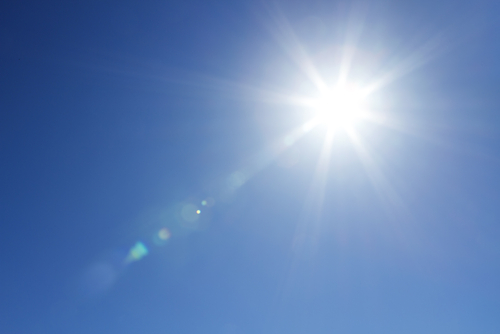Arctic sea ice appears to have reached its minimum for 2014, according to preliminary figures from the National Snow and Ice Data Centre (NSIDC) in the US.
The extent dropped to 5.02 million square kilometres (1.94 million square miles) on 17 September, making it the 6th lowest extent observed since satellite observations became available in 1979.
This year’s minimum is above the 2012 record low extent of 3.41 million square kilometres (1.32 million square miles), but still below the long-term (1981-2010) average of 6.22 million square kilometres (2.4 million square miles).
There is a lot of year to year variability in the Arctic ice extent, as it depends on the Arctic weather.
As the ice cover thins we expect the variability in cover to increase as larger regions of the Arctic become vulnerable to being blown by the wind or melting away completely over the summer.
Overall, the long term trend in ice cover remains downward.
Earlier this month in the Laptev Sea, a small portion of the ice edge was within 5 degrees of the North Pole – this is the most northerly position that the ice edge has reached in this region since satellite observations began.
This year the Northern Sea Route has opened to shipping for the seventh year in succession, but the North-West Passage through the Canadian Archipelago remains blocked by ice – emphasising how Arctic summer sea-ice cover depends on the prevailing weather patterns.
The exact date on which the minimum ice extent occurs varies from year to year, depending on the weather conditions along the ice edge. The 1981-2010 average is 15th September, and the latest date so far in the records has been 23rd September.
Future of Arctic sea ice
Based on projections from current climate models, a plausible date for the earliest ice free (defined as extent less than 1 million square kilometres) summer in the Arctic would be 2025-2030.
Work continues to improve our understanding of the processes driving the ice decline and how they are represented in climate models. This may lead to revised projections of the date for an ice-free summer in the Arctic.
Impacts on UK weather
Changes in the Arctic ice cover have the potential to influence the weather further afield, by changing atmospheric circulation pattern outside the Arctic.
There is some evidence that low ice cover at the end of the summer can drive easterly winds across Europe, particularly in winter, potentially resulting in anomalously cold conditions.
The relative importance of sea ice conditions and other factors in generating cold conditions in the UK is an active research area for the Met office.
© Met Office





